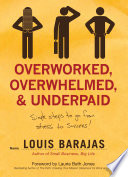

The book delves into the pervasive culture of overwork that has become normalized in many industries. It highlights how societal expectations and corporate pressures push employees to work longer hours, often at the expense of their health and personal lives. This culture is not just about the number of hours worked but also the constant connectivity facilitated by technology, which blurs the lines between work and personal time. The author argues that this overwork leads to burnout, decreased productivity, and a general sense of dissatisfaction among employees. The book encourages readers to recognize the detrimental effects of this culture and to advocate for a healthier work-life balance.
Continue readingTechnology plays a dual role in the modern workplace, serving both as a tool for efficiency and a source of overwhelm. The book explores how advancements in technology, while designed to enhance productivity, often lead to information overload and constant interruptions. The author discusses the phenomenon of 'always-on' work culture, where employees feel pressured to remain accessible at all times. This constant connectivity can lead to stress and a lack of focus, ultimately hindering true productivity. The book encourages readers to set boundaries with technology and to utilize it in a way that supports their work rather than detracts from it.
Continue readingThe author challenges traditional notions of productivity, which often equate output with hours worked. Instead, the book advocates for a more holistic view of productivity that emphasizes quality over quantity. This involves recognizing individual strengths, setting realistic goals, and prioritizing tasks that align with one's values and objectives. The book provides practical strategies for readers to assess their productivity metrics and to shift their focus from merely completing tasks to achieving meaningful results. This redefinition is essential for fostering a sustainable work environment and preventing burnout.
Continue readingSelf-care is presented as a crucial component of maintaining both personal well-being and professional effectiveness. The book emphasizes that taking time for oneself is not a luxury but a necessity. It discusses various self-care practices, including physical health, mental wellness, and emotional resilience. The author argues that prioritizing self-care can lead to improved focus, creativity, and overall job satisfaction. The book encourages readers to integrate self-care routines into their daily lives and to advocate for workplace policies that support mental health and well-being.
Continue readingThe necessity of setting boundaries is a recurring theme throughout the book. The author discusses how the lack of clear boundaries between work and personal life contributes to feelings of overwhelm. Readers are encouraged to establish firm boundaries regarding their availability, workload, and personal time. This includes learning to say no, delegating tasks, and communicating effectively with colleagues and supervisors. By setting boundaries, individuals can protect their time and energy, leading to a more balanced and fulfilling life.
Continue readingThe book emphasizes the importance of advocating for systemic changes within organizations to combat overwork and promote a healthier work culture. This involves not only individual actions but also collective efforts to influence workplace policies and practices. The author encourages readers to engage in conversations about workload management, flexible work arrangements, and mental health resources. By fostering a culture of open dialogue and support, employees can work together to create environments that prioritize well-being and productivity.
Continue readingFlexibility in the workplace is presented as a key strategy for managing workload and reducing overwhelm. The author discusses various forms of flexibility, including remote work, flexible hours, and results-oriented work environments. By embracing flexibility, organizations can empower employees to work in ways that best suit their individual needs and circumstances. The book highlights the positive impact of flexibility on job satisfaction, retention, and overall productivity. Readers are encouraged to explore flexible work options and to advocate for policies that support a more adaptable work environment.
Continue reading